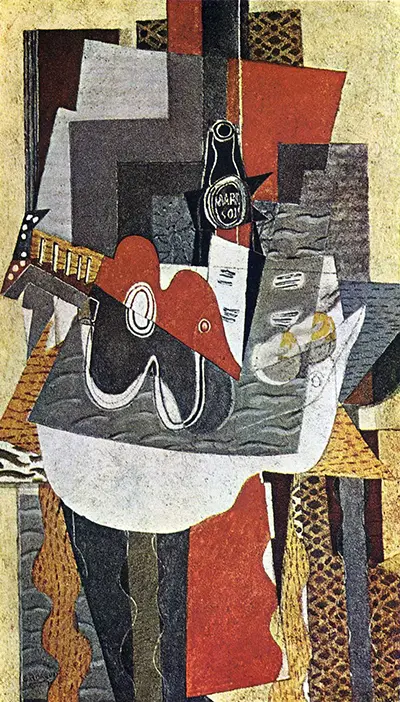The layout found here in entirely typical of this artist, with a table top and various items flattened into the cubist style of perspective. This is brighter and more varied in colour than his earlier cubist paintings, and many would say that this development improved the quality and interest of his work. For many years he worked in fairly drab contrasts where one would not feel quite the excitement or passion that can be felt here. Besides the bottle of Marc, there is also a small musical instrument on the table as well, perhaps a guitar or mandolin. Braque was a skilled musician himself and put these string instruments into many of his still life arrangements. There is also some fruit on the table as well, and perhaps also a cloth covering most of its surface area.
There are a number of patterns within the scene, including from the carpet and also the table surface. Braque liked to place these directly alongside each other in a way that would clash, but deliberately so. This would create an energy within the painting, particularly in the lower half of the composition. The artist produced several paintings featuring the Marc Vieux brandy that were actually set within local cafes and bars, and so it is quite possible that he did the same here. The inclusion of music does not confirm this, though, as he also had a number of musical instruments within his own home and frequently captured them in paintings created within his studio too.
The artist had some specific techniques for adding lettering to his paintings that were developed during his time working in a trade, prior to becoming a fully fledged artist. The same can be said for the wood effects that were used on a number of tables within his still life paintings. Perhaps the patterned carpets were merely an extensive of that, but were important in adding further interest to his contributions in this art form. Picasso and Braque essentially created Cubism by themselves, though diverged in how they used it at different times of their career.


